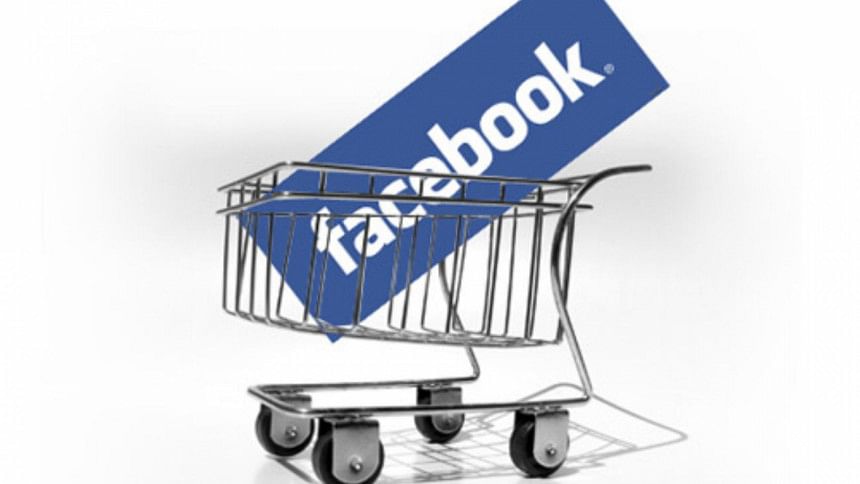Can informal digital commerce bring women's financial inclusion?

When talking about financial inclusion, we often focus on closing the gender gap in financial account ownership as a means of empowering women. Yet as many have pointed out, accounts by themselves do not lead to empowerment. Unless having a financial account comes with a compelling reason to use it, most women will not use their accounts to capture opportunities.
With the impressive growth of mobile money in Bangladesh, there was justified hope that digital financial services (DFS) could help close the gender gap in financial inclusion. Although DFS have made some contributions, it may have hit a roadblock. According to World Bank's Findex, between 2014 and 2017, Bangladesh's financial gender gap went from nine percent to 29 percent—one of the largest in the world. There are several factors that influence the gender gap that exists in mobile money. First, there's a 28 percent gender gap in phone ownership. Second, there's a 26 percent gender gap in DFS use in general. Third, there's a 14 percent gender gap in registered mobile money usage (wallet users). The compounding effect of these layers of gender gap is significant. Looking at opportunity spaces outside DFS may be helpful.
The e-commerce market in Bangladesh has experienced significant growth in the last five years. A 2018 pi STRATEGY study found that e-commerce increased from USD 25 million in 2014 to over USD 200 million in 2017.This study forecasted that online sales will reach USD 1 billion by the end of 2021. Currently, according to the e-Commerce Association of Bangladesh (e-CAB), an average of nearly 25,000 orders are placed online every day. The e-commerce market is growing especially fast in rural areas; in 2017, e-commerce grew 127 percent in urban areas and 167 percent in rural areas.
While there are no concrete gender disaggregated statistics on e-commerce use in Bangladesh, it is estimated that an overwhelming majority of online shoppers and entrepreneurs are women. The Daily Star stated in a March 2018 article that women dominate the e-commerce market of the country both as shoppers and entrepreneurs. The CEO of a product delivery company that fulfils online orders indicated in that article that 73 percent of its 5,000 registered businesses are women-run.
Yet e-commerce presents barriers to entrepreneurs in the informal sector, where many women are concentrated. To transact on e-commerce platforms in Bangladesh, businesses need their own bank accounts, and to obtain a bank account they need to be officially registered with the government. According to a director at e-CAB, however, many Bangladeshi entrepreneurs operate their businesses informally on Facebook, without a business registration. The long, cumbersome process of obtaining a trade license deters many, and cultural norms can make the process especially difficult for women to go through the registration process on their own. As a result, a large percentage of female e-commerce entrepreneurs operate small enterprises within the informal sector and opt to use an informal variant of e-commerce that is called f-commerce (informal digital commerce, predominantly through Facebook, but also through other social media and messaging platforms).
Unlike classic e-commerce—where product showcasing, order placement, and payments are all done over electronic channels, such as websites and mobile apps—in f-commerce product showcasing and order placement are done on platforms such as Facebook, Instagram, WhatsApp, and Viber, while payments are mostly done through cash-on-delivery (COD). Relying mostly on COD enables informal businesses to bypass the requirement for a business registration and engage in e-commerce.
The growth of f-commerce has also provided female entrepreneurs with enormous opportunities because it allows them to work at their own pace from their homes and requires low initial investments. It helps women overcome some intrinsic cultural barriers with respect to limited mobility, safety and security issues that adversely affect their labour force participation (which, in Bangladesh, is 36 percent for women and 80 percent for men, according to BBS labour statistics). Being able to operate businesses from home directly circumvents this barrier.
Research is beginning to shed light on why so many female shoppers engage in f-commerce. In late 2018, a CGAP supported pi STRATEGY study interviewed women in Bangladesh and found that f-commerce has become a preferred way of shopping for women because of its ease, convenience, product variety and price. All female respondents in this study who were asked about their views on buying things online expressed interest in making online purchases. "The cosmetics shop in our local bazaar has maybe 10 different types of lipsticks; the Facebook page I bought cosmetics from last Eid had over 100 varieties of lipsticks at a wide range of prices. But it took about a week to receive my orders from the Facebook page; I don't like the wait," said one 24-year-old woman from a semi-urban town.
Overall, f-commerce connects entrepreneurs and shoppers across urban, semi-urban and rural markets, and therefore, opens up significant market opportunities that were previously unavailable.
Literature on women's financial inclusion shows that women have very complicated financial lives. A 2018 Women's World Banking report indicated that women are in-charge of saving for emergencies, meeting health expenses, paying school fees and planning for the future. The f-commerce opportunity in Bangladesh is an example of a use-case that addresses needs of women for income generation on the supply side and convenience and safety on the buyer side. Current DFS offerings meet short-term person-to-person transfer needs, but finding innovative mechanisms to link mobile money wallets to f-commerce platforms could go a long way in providing a little nudge to bring a large segment of shoppers and entrepreneurs into the world of digital payments. This could get them on the first rung of the financial inclusion ladder—an account to be used for payments, while building the foundation from which other use-cases, such as digital credit, could emerge. The gender gap in financial inclusion cannot solely be reduced by expanding women's access to accounts. Those accounts must be tied to compelling reasons and opportunities to use them. This can catalyse sustained financial inclusion for women. And that is real empowerment.
Pial Islam is Managing Partner at pi STRATEGY, a management consulting firm that specialises in helping clients transform ambiguity into opportunity. He can be reached at [email protected].
This article leverages a recent study on Gender Gap in Digital Financial Services that was authored by pi STRATEGY and launched by CGAP/World Bank at the global stage to commemorate International Women's Day 2019.

 For all latest news, follow The Daily Star's Google News channel.
For all latest news, follow The Daily Star's Google News channel. 



Comments